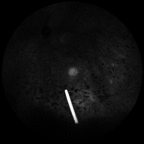Dexamethasone implant in the management of diabetic macular edema from clinician's perspective
- PMID: 31190726
- PMCID: PMC6526171
- DOI: 10.2147/OPTH.S206769
Dexamethasone implant in the management of diabetic macular edema from clinician's perspective
Abstract
The aim of this article is to provide an overview of characteristics and principles of use of dexamethasone implant in patients with diabetic macular edema (DME). The condensed information about patient selection, dosing, and postinjection management is provided to make the clinician's decisions easier in real-life practice. DME is a common complication of diabetes and the leading cause of visual loss in the working-age population. Inflammation plays an important role in the pathogenesis of DME. The breakdown of the blood-retinal barrier involves the expression of inflammatory cytokines and growth factors, including vascular endothelial growth factor (VEGF). Steroids have proved to be effective in the treatment of DME by blocking the production of VEGF and other inflammatory cytokines, by inhibiting leukostasis, and by enhancing the barrier function of vascular endothelial cell tight junctions. Dexamethasone intravitreal implant has demonstrated efficacy in the treatment of DME resistant to anti-VEGF therapy and in vitrectomized eyes. Data from clinical trials suggest that dexamethasone implant can be considered as first-line treatment in pseudophakic eyes. Dexamethasone implant is also the first-line therapy in patients not suited for anti-VEGF therapy, pregnant women, and patients unable to return for frequent monitoring. It has been shown that the maximum effect of dexamethasone implant on visual gain and retinal thickness occurs approximately 2 months after injection. Various treatment regimens are used in real-life situations, and reported reinjection intervals were usually <6 months. The number of retreatments needed decreased over time. Treatment algorithms should be personalized. Postinjection management and follow-up should consider potential adverse events such as intraocular pressure elevation and cataract.
Keywords: Ozurdex; dexamethasone; diabetic macular edema; intravitreal implant.
Conflict of interest statement
Allergan provided funding for the publication fees and editorial services. Both authors provided consultancy and received a speaker honoraria from Allergan, Novartis, and Bayer. The authors report no other conflicts of interest in this work.
Figures
Similar articles
-
Safety and Efficacy of Dexamethasone Intravitreal Implant Given Either First-Line or Second-Line in Diabetic Macular Edema.Patient Prefer Adherence. 2023 Dec 12;17:3307-3329. doi: 10.2147/PPA.S427209. eCollection 2023. Patient Prefer Adherence. 2023. PMID: 38106365 Free PMC article. Review.
-
[Early efficacy of dexamethasone implant (OZURDEX®) in diabetic macular edema: Real life study].J Fr Ophtalmol. 2017 May;40(5):408-413. doi: 10.1016/j.jfo.2016.10.017. Epub 2017 Mar 21. J Fr Ophtalmol. 2017. PMID: 28336283 French.
-
Dexamethasone intravitreal implant in the treatment of diabetic macular edema.Clin Ophthalmol. 2015 Jul 16;9:1321-35. doi: 10.2147/OPTH.S79948. eCollection 2015. Clin Ophthalmol. 2015. PMID: 26213460 Free PMC article. Review.
-
Place of intravitreal dexamethasone implant in the treatment armamentarium of diabetic macular edema.World J Diabetes. 2021 Aug 15;12(8):1220-1232. doi: 10.4239/wjd.v12.i8.1220. World J Diabetes. 2021. PMID: 34512888 Free PMC article. Review.
-
Perspective on the role of Ozurdex (dexamethasone intravitreal implant) in the management of diabetic macular oedema.Ther Adv Chronic Dis. 2015 Sep;6(5):234-45. doi: 10.1177/2040622315590319. Ther Adv Chronic Dis. 2015. PMID: 26336592 Free PMC article. Review.
Cited by
-
Effectiveness of Suprachoroidal Injection of Triamcinolone Acetonide in Resistant Diabetic Macular Edema Using a Modified Microneedle.Clin Ophthalmol. 2022 Nov 21;16:3821-3831. doi: 10.2147/OPTH.S391319. eCollection 2022. Clin Ophthalmol. 2022. PMID: 36438589 Free PMC article.
-
Multicenter, Prospective, Randomized Study of Dexamethasone Intravitreal Implant in Patients with Center-Involved Diabetic Macular Edema in the Asia-Pacific Region.Clin Ophthalmol. 2021 Oct 13;15:4097-4108. doi: 10.2147/OPTH.S325618. eCollection 2021. Clin Ophthalmol. 2021. PMID: 34675477 Free PMC article. Clinical Trial.
-
Safety and Efficacy of Dexamethasone Intravitreal Implant Given Either First-Line or Second-Line in Diabetic Macular Edema.Patient Prefer Adherence. 2023 Dec 12;17:3307-3329. doi: 10.2147/PPA.S427209. eCollection 2023. Patient Prefer Adherence. 2023. PMID: 38106365 Free PMC article. Review.
-
Pharmacotherapy and Nutritional Supplements for Neovascular Eye Diseases.Medicina (Kaunas). 2023 Jul 20;59(7):1334. doi: 10.3390/medicina59071334. Medicina (Kaunas). 2023. PMID: 37512145 Free PMC article. Review.
-
Anti-VEGF Treatment of Diabetic Macular Edema: Two-Year Visual Outcomes in Routine Clinical Practice.J Ophthalmol. 2020 Mar 16;2020:6979758. doi: 10.1155/2020/6979758. eCollection 2020. J Ophthalmol. 2020. PMID: 32280530 Free PMC article.
References
Publication types
LinkOut - more resources
Full Text Sources



